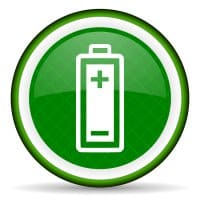Six large LG Chem lithium-ion battery storage units will be put into service at Steag power plants in Germany.
The 100 million euro project will see 15 MW energy storage systems (ESS) installed in power stations at Herne, Lünen and Duisburg-Walsum, Bexbach, Fenne and Weiher.
The batteries will be used for grid stabilization and capable of storing energy from the grid within seconds of an oversupply scenario and to feed electricity back into the grid as required.
“…. we believe that renewable energies will have to take a more responsible role in ensuring security of supply and, therefore, will have to provide more firm capacity on the energy-only market,” said Joachim Rumstadt, Chairman of the Board of Management of STEAG GmbH
“Combined with extensive commercial and technical expertise in energy, which we can draw on, battery systems will be one key to resolving this issue.”
Steag is undertaking the project, to occur from mid-2016 to early 2017, without the support of subsidies or grants.
The company already has experience with large scale energy storage in the form of the 1 MW LESSY (Lithium Electricity Storage SYstem) at its Völklingen-Fenne power plant. That system commenced commercial operation in February 2014 and was one of the first lithium-ion storage batteries in Germany to be approved for grid stabilisation functions.
Globally, Steag has has a total installed power generation capacity of around 10,300 megawatts, with approximately 8,200 MW capacity in Germany; making it one of the nation’s largest electricity generators.
The German energy storage market has experienced significant growth in recent years; largely due to Germany’s ambitious energy transition (Energiewende) initiative.
Generous subsidies in place for home battery systems have been very popular. German development bank KfW, which provides low-interest loans and investment grants for battery storage, supported 35% more solar + storage projects in the first seven months of this year compared to the same period last year.
According to a recent study by Agora Energiewend, Germany’s electricity infrastructure as it stands could quite easily cope with with four times as much solar power being installed if if energy storage is properly integrated.













































